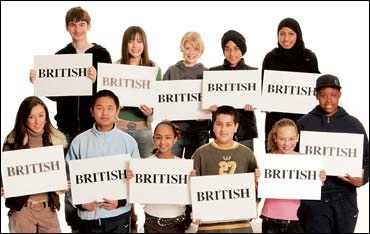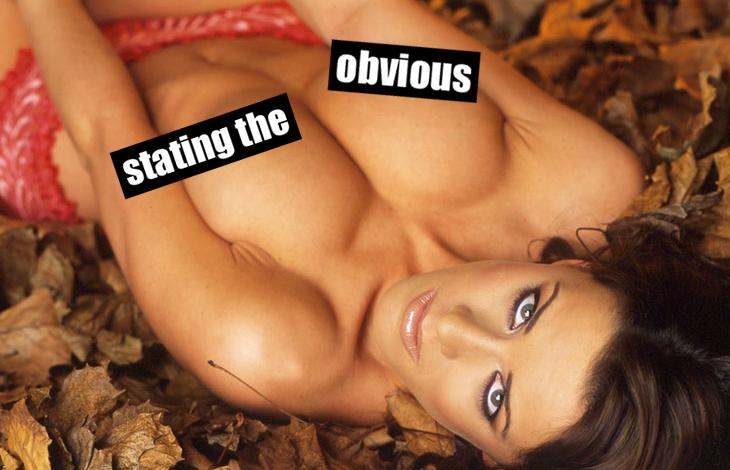Racism and sexism, a double whammy for the Brown girl.
I have been following the #nomorepage3 campaign and am happy to see the progress made over the past few months.
The campaigners quote The Independent on their About Us page:
‘THE PAGE 3 IMAGE IS THERE FOR NO OTHER REASON THAN THE SEXUAL GRATIFICATION OF MEN. SHE’S A SEX OBJECT. BUT WHEN FIGURES RANGE FROM 300,000 WOMEN BEING SEXUALLY ASSAULTED AND 60,000 RAPED EACH YEAR, TO 1 IN 4 WHO HAVE BEEN SEXUALLY ASSAULTED, IS IT WISE TO BE REPEATEDLY PERPETUATING A NOTION THAT WOMEN ARE SEXUAL OBJECTS?’
Though the independent are most probably referring to what they think of as ‘all women’ here, The Sun’s Page 3 has a profound affect on British Asian women* in even more ways. Newspapers and the media are insistent on reproducing one type of discourse on British Asian women, which ironically veils them out of the debates they are associated with, such as patriarchy, sexism and violence.
The majority of page 3 models are not women of colour. In fact British models of Asian origin are less ‘mainstream’, so ethnic minority girls’ concept of beauty is for the most part shaped by white-centric ideals, mass produced by the media for great profit. That is not to say that I want more women of colour featured in The Sun, absolutely not. The Sun is bullish in its portrayal of ethnic minorities and women of colour have no need to be further insulted by featuring inside. The message given to British Asians (both women and men) is that women of colour are still a) less attractive than Caucasian women and b) women of colour are still treated as an ‘other’ and therefore are barred from the issues they are involved in.
Only white women are attractive – During the British colonial period Indian women were either presented as mysterious or as cheap sex without pay. When pitted against the European white women, there were purposefully made to feel sexually unattractive and less pure as this kept them in the lowly, inferior position need to keep colonial rule afloat – white supremacy. This colonial legacy is still evident for example in the skin lightening creams that are widely available. Racism and sexism is still prevalent and these experiences are upsetting and deeply damaging for the development of young British Asian girls. It is made worse by the fact that it is rampant amongst ethnic minority groups. White skin or lighter skin is preferred over darker skin in some British Asian communities. I often heard ‘the lighter skin, the better’, or ‘she’s too dark’ in my secondary school! Whom by? Young British Asian boys when ‘rating’ girls according to their attractiveness. Migrant Asian parents have not been shy to show their preference to lighter skin colour. Skin lightening creams that are highly damaging are extremely popular in countries like Pakistan, India, and Bangladesh and this type of colour discrimination has no doubt carried over into Britain. One whitening cream is literally called ‘Fair and Lovely’ reproduced and packaged by none other than Unilever! Just do a Google search for ‘skin lightening creams’ and there are endless lists of products that will ‘brighten up your complexion’.
 It was not uncommon for me to hear and see that British Asian girls stay indoors at school during intense summer periods to stop themselves from tanning. And yes, Asians do tan. Sexism and racism is a cruel cocktail for British Asian girls, since this pressure for lighter skin is only applied to Asian girls, because of course the brown boy can still marry; the brown girl, however, risks her chances of a marriage proposal the browner she gets. Sexism and racism, a double whammy for brown girls of Britain. The current shortage of ethnic minority women to act as role models in careers such as the civil service, government, sports, politics, big businesses, the media, academia and Arts is currently is somewhat of a self fulfilling prophecy. The less there are, the less there will be until that double whammy is dissipated and unreasonable beauty standards stop and respect from others flourishes.
It was not uncommon for me to hear and see that British Asian girls stay indoors at school during intense summer periods to stop themselves from tanning. And yes, Asians do tan. Sexism and racism is a cruel cocktail for British Asian girls, since this pressure for lighter skin is only applied to Asian girls, because of course the brown boy can still marry; the brown girl, however, risks her chances of a marriage proposal the browner she gets. Sexism and racism, a double whammy for brown girls of Britain. The current shortage of ethnic minority women to act as role models in careers such as the civil service, government, sports, politics, big businesses, the media, academia and Arts is currently is somewhat of a self fulfilling prophecy. The less there are, the less there will be until that double whammy is dissipated and unreasonable beauty standards stop and respect from others flourishes.
The veiling of the British Asian woman – Success stories of the Asian woman are rarely published in the news. And so British Asian women are silenced and theoretically and physically veiled out of discourse. And when she is on the news, it is another case of oppression by her aggressive father and brothers or another forced-to-marry-underage story. That is not to say that this problem doesn’t exist. It certainly does, but the volume of coverage is unequal, and the unequal balance of positive and negative news on Asian women is unfair. Even debates on whether the Muslim veil/ Burkha should be banned often have a Muslim male cleric rather than a Muslim woman involved in the debate. Ironically therefore, while these papers rampantly criticise British Asians and their inherently patriarchal culture, they also refuse to give these women a platform to voice their concerns. And so most of the time, they are simply exploiting these tragic cases of violence and oppression against women, to continue to depict racist and bigoted views concerning Britain’s ethnic minorities. Minorities are constantly made to feel alien and ugly in this way.
Even outside of tabloids, in British films the leading lady is almost always white. In Harry Potter they have only have two ethnic minority girls, the Patel twins, as far as I can remember. Also WOW, JK Rowling, stereotyping much with Asian names? Could have been a little more creative perhaps? What is needed is a shift in attitude and thought; minorities need to be accepted as mainstream and not that ‘spicy’ story that will sell. At the moment any portrayal of minorities are almost always a charade, oriental perhaps, immersed in homophobia (see Eastenders), wife beaters and violent men (see The Sun, Daily Mail etc), terrorists (see the latter again). ‘Britain is not the same as it was 60 years ago’ – actually there were black and Asian people in Britain well before the ‘Empire windrush’, thank you very much. So the more people know this, then the faster we can move forward and improve Britain’s ‘race relations’.
 *When using the term British Asians, I refer to second and third generation Indians, Pakistanis and Bengalis.
*When using the term British Asians, I refer to second and third generation Indians, Pakistanis and Bengalis.
Amna G Riaz explores racism, orientalism, neo-colonialism and neoliberalism in her poetry and at her blog. Tweet her @AmnaGRiaz
Related articles
- The veil debate: why we must respect the autonomy of all women (thefword.org.uk)


Personally, I’m in no big rush for equal representation when it comes to mediums used to further objectify women. This in no way discounts the need for women of color to see representations of their own beauty in mainstream media and the such. I know this sounds simplistic, but it is up to us to “represent” and this comes only by being honest about our own ugly legacy. Color, being brown, and the varying hues, plagues communities of color and the sooner we embrace all of our beauties, even if it means redefining what it means to be beautiful, the closer we’ll be to the goal. For me, the most beautiful woman, regardless of color, is the one who is naturally herself, sans make up, weaves/wigs, spanks, glitter, Photoshop, lightening cream, tanning cream, dyes and the such. But that’s just me.
LikeLike
I watched the “Dark Girls” Documentary about two weeks ago; it mentions colorism and it makes light of much of what you expound here. Quite sad really.
LikeLike
Great post. I have long been familiar with shadism in the African diaspora, but wasn’t aware that it affected those from the Asian diaspora in a similar way.
LikeLike
Great post, you made so many excellent points! I’m glad you brought up colourism; it’s definitely prevalent in the black community too. The number of people who use skin bleaching products is astounding (and tragic).
LikeLike
You missed out Cho Chang, she was the Chinese girl Harry fancied.
Though Cho and Chang are both surnames, and Korean surnames at that.
LikeLike
Ow. Ouch. Wow. That’s bad.
LikeLike